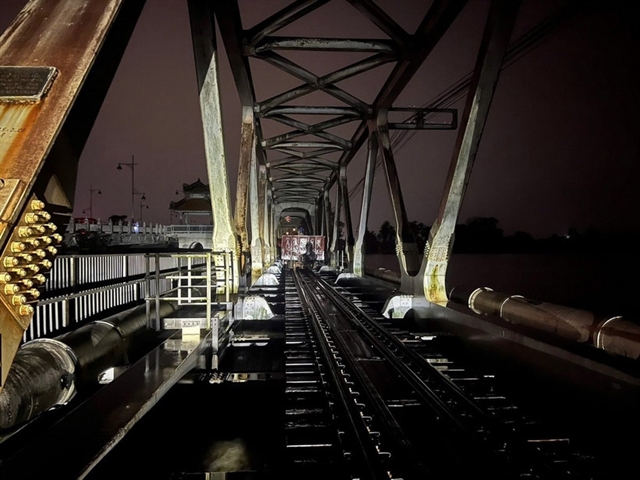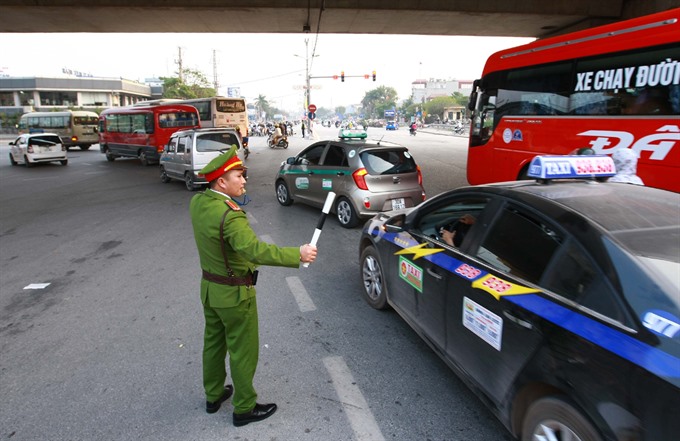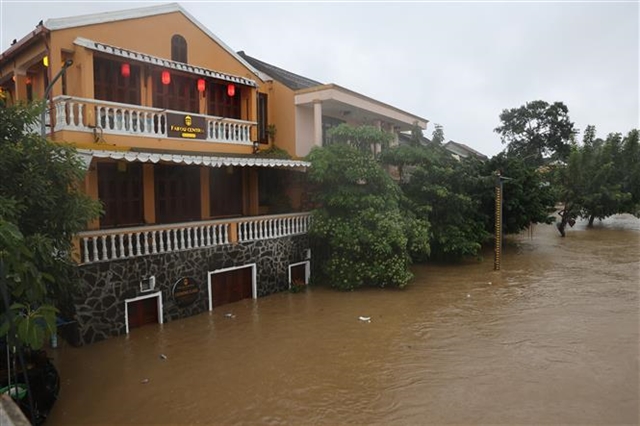 Society
Society

Hà Nội has about 35 congestion hotspots and the maximum time spent stuck in traffic has been cut to just 20 minutes.
 |
| A police officer manages traffic flow at an intersection of Giải Phóng and Pháp Vân roads in Hà Nội. The city has about 35 congestion hotspots and the maximum time spent stuck in traffic has been cut to just 20 minutes.VNA/VNS Photo Doãn Tấn |
HÀ NỘI — Hà Nội has about 35 congestion hotspots and the maximum time spent stuck in traffic has been cut to just 20 minutes.
According to Hà Nội’s Transport Department six of the worst spots for traffic were eased in the first six months of the year.
The spots include Lò Đúc - Trần Khát Chân - Kim Ngưu; Trung Văn - Tố Hữu; Chương Dương Bridge, Trâu Quỳ - National Highway No 5 and a spot near the Vinamilk Factory on National Highway No 5, reported Giao thông (Transport) online newspaper.
A number of streets that suffered standstills of up to an hour, such as Phạm Hùng, Lê Văn Lương, Trần Duy Hưng, Ngã Tư Sở, Trường Chinh and Cầu Giấy, now only witnessed traffic jams for 5 – 10 minutes.
Nguyễn Văn Thái, a taxi driver said, traffic congestion on the Trung Văn Intersection currently only lasted about 10-15 minutes.
In the past traffic was brought to a standstill for up to 40 minutes, he added.
“Now it’s much shorter,” he said.
On the two streets of Cầu Giấy and Xuân Thủy, where the construction site of the Nhổn – Hà Nội Station elevated railway is located, road users spent around 1-2 hours between the times of 7-9am and 6:30-7:30pm daily because of heavy traffic, but at present, the time spent stuck was about 10-20 minutes.
Director of the transport department Vũ Văn Viện said traffic jams often happened in specific spots because of construction sites and the increasing number of private vehicles.
Viện said the city was aware of the problem and was working with relevant agencies to come up with solutions as soon as possible.
At first, the traffic hotspots were classified following the cause of congestion, and then authorised agencies would issue appropriate solutions, he said.
For locations near construction sites, the department asked investors to speed up progress, he said.
Especially, investors of the Cát Linh – Hà Đông Elevated Railway and Nhổn – Hà Nội Station Elevated Railway were told to not only speed up construction but also assign staff to direct traffic and minimise trouble for road users, he said.
Ongoing plans
Viện said the department planned to remove another six spots of traffic congestion: La Thành – Hoàng Cầu; Hoàng Cầu – Xã Đàn; Nguyễn Khang – Cầu Giấy, Láng – Nguyễn Chí Thanh, Mọc Brigde – Tam Trinh – Đền Lừ over the last six months of this year.
In a related move, the Hà Nội People’s Committee said the city would issue a set of solutions to bring traffic congestion under control. The solutions include improving the capacity of public transport and limiting private vehicles.
Hà Nội is also scheduled to invest US$31 billion in improving the capacity ofpublic transport by 2030. The city is developing a public transport system, which by 2020 will be able to serve the needs of 30 to 35 per cent of citizens in the inner city and 15 per cent of citizens in satellite cities. By 2030, it will be able to serve the demands of 50 to 55 per cent of people in the inner city and of 40 per cent in the satellite cities.
Additionally, on July 4 the city People’s Council approved a project of private vehicle management in 2017-20, with a vision towards 2030.
Data from the transport department showed that the city now has about 5.2 million motorbikes and 500,000 cars. — VNS




